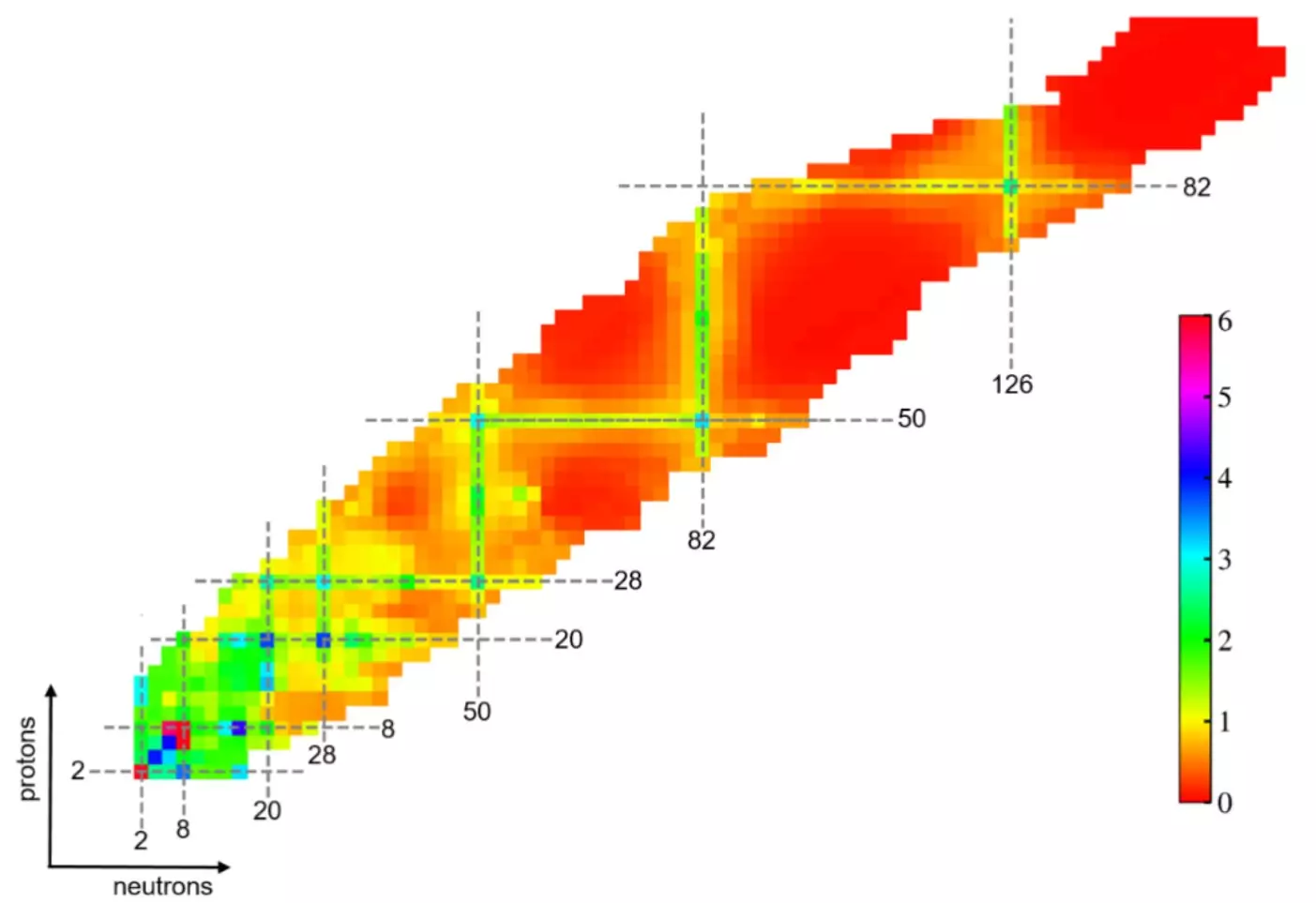Recent advances in nuclear physics have turned a spotlight on the fascinating yet complex structure of atomic nuclei. A research initiative conducted by teams from the Institute of Modern Physics (IMP) of the Chinese Academy of Sciences, Huzhou University, and the University of Paris-Saclay has harnessed the power of machine learning to provide unprecedented insights into the so-called “magic numbers”—those specific quantities of protons or neutrons that confer stability to nuclei. This exploration is particularly groundbreaking for nuclei that lie far from the stability valley, an area where conventional understandings of nuclear structure are often challenged.
Magic numbers, defined as the numbers of nucleons (protons and neutrons) that result in particularly stable atomic configurations, have been a cornerstone of nuclear physics since their discovery in the 1930s. Classic magic numbers such as 2, 8, 20, 28, 50, 82, and 126 characterize elements that are extraordinarily stable. However, as burgeoning evidence suggests, these numbers may not be as fixed as once believed. The research team’s latest findings challenge existing paradigms by exploring the evolving nature of these magic numbers, especially in the context of unique nuclei such as tin-100 and oxygen-28.
The innovative approach adopted by the researchers involves utilizing modern machine learning algorithms, a method gaining traction in various scientific domains. Machine learning’s role in nuclear physics is particularly compelling, as it allows for the processing of vast datasets with a precision and speed far exceeding traditional methods. According to Lyu Bingfeng, an associate professor at IMP and one of the study’s authors, “Understanding whether traditional magic numbers persist far from the stability line, and identifying any potentially emerging new magic numbers, could unlock insights that span the field of nuclear physics, impacting our grasp of new physical phenomena.”
By focusing on features of atomic nuclei that correlate with energy levels and transition probabilities, researchers have achieved a remarkable level of accuracy in predicting the behavior of low-lying excited states. Wang Yongjia from Huzhou University highlighted this breakthrough: “Our machine learning framework allowed us to surpass existing nuclear models and prior machine learning algorithms with unprecedented precision.”
One of the most impactful revelations of this study is the observed disappearance of the traditional neutron magic number 20 in oxygen-28. As the team delved into the characteristics of this nucleus, they identified that the stable properties once attributed to magic number 20 do not apply in the same way as they do for nuclei nearer to the stability line. This shift in understanding could have profound implications for theorizing the properties of other exotic nuclei. Conversely, the magic number 50 has been shown to retain its stability in the tin-100 nucleus, providing researchers with a significant benchmark for further investigation into other nuclear configurations.
The researchers emphasized the pivotal role played by fundamental properties of atomic nuclei in enhancing the machine learning algorithm’s performance. This not only elevates the current understanding of excitation states but also paves the way for future advancements in nuclear modeling theories.
The ramifications of this study extend into practical and experimental realms, particularly for forthcoming measurements of energies related to low-lying excited states and electromagnetic transitions. The authors suggest that their findings will prove invaluable for global facilities dedicated to rare-isotope research, including China’s High Intensity Heavy Ion Accelerator Facility. This endeavor aims to deepen collaborative efforts across international scientific communities, as understanding these nuances of nuclear structure may drive discoveries in both theoretical physics and applications in medicine, energy, and fundamental sciences.
The intersection of machine learning and advanced nuclear physics presents a promising frontier in the investigation of atomic structure. As researchers continue to peer into the mysteries of magic numbers and their evolving nature, a more refined understanding of atomic nuclei could emerge—potentially rewriting textbooks and reshaping our comprehension of the universe’s foundational elements.


Leave a Reply